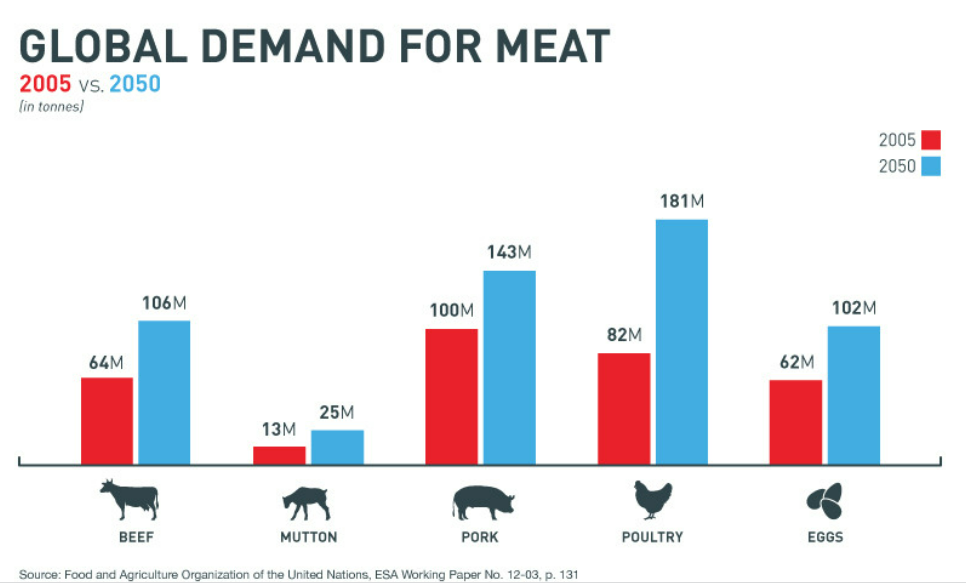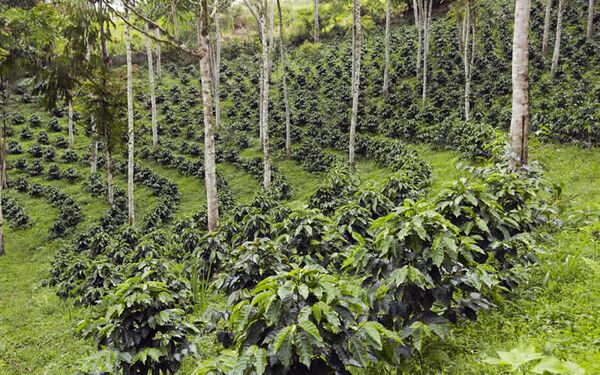Tyson Foods Inc., U.S. recalled 89,55,296 pounds of ready-to-eat chicken in April 2021 to prevent possible Listeria monocytogenes adulteration. It was recalled after a consumer died, three people were hospitalized, and three people were ill.

A matter of concern for consumers and the producers. The meat market is considered one of the most fragile food industries with various factors affecting the quality and safety of meat in the supply chain. Supply chain management is complex and a difficult task. In the meat supply chain, transparency is necessary to guarantee safety, quality and trust of consumers in meat products.
The fragmented and complex meat supply chain has rendered the traditional traceability methods inefficient, lacking end to end visibility. The meat industry seeks to establish reassurance on traceability in the entire value chain that helps to build integrity and substantiate the origin claims of the product.

What is Meat Traceability?
Traceability refers to the ability to track the movement of food items and their constituents both upstream and downward through the supply chain. Meat traceability starts with the birth of the animal followed by maturing, slaughtering, butchering, processing, distributing and finally consumption.
Traceability recreates the story of meat to the consumer. It maps the journey right from the source, its storage, processing, transportation and distribution and final consumption.
Why is meat traceability important and how does it work?
According to the World Health Organization an estimated 600 million – almost 1 in 10 people in the world – fall ill after eating contaminated food and 420 000 die every year. In the Global market, food safety and management issues have to align with the food safety systems, internal and external of the supply chain.
Resulting of which, global trade has both organizations and regulatory bodies on the line. Safety and quality concerns will be met via correct sourcing of raw materials, stringent processing rules, and proper recordkeeping. Systematic management, tracing, and communication are essential for achieving such safety; if a product becomes contaminated across a supply chain, the only way to recall such items is through food traceability.
With the help of meat traceability, both external and internal factors of contamination can be mitigated to a certain extent. Tracing products has gotten considerably easier with effective information tracking across the supply chain. Food traceability is sought by two parties on opposite ends of the spectrum: the producer and the consumer. For various needs, data is gathered along the supply chain of products and their components. Traceability systems aid in the identification and tracking of products throughout a continuous process, regardless of industry.
The amount of data gathered (Breadth), the deep to which the product can be tracked backward or upward in the supply chain (Depth), and the accuracy of the information that can ensure the source or origin of data collected (Precision) are all factors that differentiate traceability systems.
The Indian meat industry
The global meat industry is valued at 838.3 Billion US dollars and India is valued at 31 Billion US dollars ranking the eighth largest meat producer in the world. It has the largest population of livestock, which makes it the largest Buffalo meat producer and the 2nd largest Goat meat producer.

Traceability in the Meat industry
In any industry, success in traceability is achieved through sharing of information. Maintaining and tracking data records throughout the supply chain, helps maintain better traceability. The meat supply chain in brief contains producers, processors, distributors and consumers. A key feature of any traceability system is the ability to identify what and how traceability should be implemented.
- Every batch/product/lot should be uniquely identifiable.
- Data recorded should be stored and transferred in a secure and immutable manner.
- The identification marks should be permanent and retained the same throughout the supply chain.
- Data capturing should be made simple and easy.
There are no set rules to plan a traceability model; it depends on what the organization and the consumer are looking for.
Producer
This is the core aspect that determines the output of meat quality, hence a lot of attention is provided to this stage. Both livestock details and farming activities have to be recorded for backtracking meat.
- Geotagging of farm locations with satellite measurement systems and boundary management to manage livestock.
- Livestock performance in different farm activities is measured for insemination, weight gain, milking, pregnancy, calving, etc. helps in efficient heard management.
- Identification and marking of all animals for further processing are strictly maintained.
- Reports and certificates like vaccination reports, microbiological tests, quality reports, fodder details, etc are recorded for sharing.
It is important to maintain records about health, breeding, calving, culling, weaning and feeding and this information is carried forward as the animals move forward in the supply chain.
Tracing methods
Data capturing technology have evolved from low-cost and conventional ear tags and tattoos on livestock to advanced technologies like RFID and Barcode ear tags, DNA-based tracking, bio-coding, batch markers, cloud-based database system, real-time health monitoring, and geo-tagging with location details for grazing boundaries and many more. Meat identification and traceability software allows feedlots to maintain real-time traceability data.
Processing
Slaughtering, processing and packing take place in this stage. When the meat is cut, it portrays many safety and quality aspects and gives an idea of how the animal was treated in farming. The vital feature for tracking products is the ability to link various processes to their source. Under the meat industry, the cut meat is again marked, tagged and linked to its source. It again goes through processing and quality checks like microwave radar and Quantum dots. These are later packed in suitable temperatures and conditions ready to be shipped.
Small cuts are further linked back to batches, animal group, country of birth, slaughter time, health certificates, production and slaughterhouses.
Distribution
Shelf lives of meat products are fragile if they are not properly stored or maintained. Therefore suitable warehouses and efficient logistic management can help reach the consumers in time. Every distribution center is tracked with, the recording of inward and outward product details linking back to the processor and further to the wholesaler/store.
Here real-time data is being shared among stakeholders for better planning and recall situations.
Consumer
Today’s consumers, not only want their product to be tasty but has evolved to demand for meat safety, quality, sustainable practices, meat processing, meat source, etc. and it is the consumer’s right to know such details. Technological advancements in the meat industry have proved to satisfy such consumer needs through real-time tracking, product recalls, QR Code scanning and software implementations.
Meat the way forward with blockchain traceability
When food safety arises, it is always followed up with traceability. In today’s world Traceability solutions are no more a choice but a necessity, proving their abilities in satisfying organizations, consumers and regulatory bodies. Traceability enabled meat is now the new market, customers are now demanding and accepting traceable meat, even though it’s for a premium price. It goes far from just providing details about meat to the consumers, providing benefits from increased meat quality, safety, lesser recall, better management, less cost, less wastage and an efficient supply chain.
Purchasing behaviour of consumers in numbers | Download nowWhile developing trust and having an edge over competitors the key to meat traceability is to understand the need and value of traceability to the various users of information, be it the organization, consumer, or a governing body.
India is moving towards a protein aware country and the demand for clean, fresh, quality meat products is rising steadily. Given that 80% of Indian consumers choose to buy meat from local markets, with the segment getting organized, consumers are moving from unhygienic shops to clean retail stores as well as online meat brands. Today brands are listening to consumers, engaging with them and building a trusted ecosystem. Environmentally sustainable production is gaining importance in the eyes of the consumer and traceability can be used as a method to certify production, processing and nutritional attributes.
Blockchain traceability provides a validated, extra layer of transparency in the meat supply chains. The capture of real-time data at each stage in the meat supply chain aids in end to end visibility ensuring food safety and product integrity. Each product gets a timestamped digital identity that proves its provenance and enhances customer engagement with a farm to fork story. The immutable data guarantees an authentic and an accountable product. TraceX blockchain powered solutions provide
Farm management solutions in the form of pre-harvest and post-harvest solutions to realize end to end traceability for the end consumer with a QR code story.



